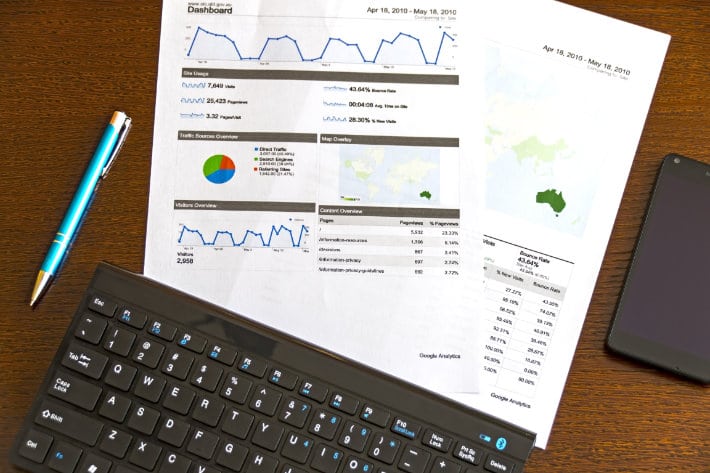
Wouldn’t it be great if you had a way to help you make some of your design decisions?
Sometimes, having a completely blank slate for a design project is awesome because you can really stretch your creativity and come up with something new and original that solves the client’s problems while also looking beautiful.
But other times, having very little guidance for your project is more of a challenge than a dream. Whether it’s a nit-picky detail or a major decision about the website’s structure, a bit of information about the “right” choice might be really helpful.
Having that kind of input is possible, and it enables you to make what’s called an informed design decision. So how does this work and how do you make it happen?
The secret to making informed design decisions
It all boils down to one word, and you’ve probably heard it a million times before:
Data.
We live in a data-centric world that brings all kinds of information right to our fingertips. This information can tell us just about anything we want, from a user’s location to behavior on a site to color preferences. There are very few limits on the data you can get, and with a bit of know-how, you can put that data to work in your designs.
So what kinds of data can you use?
There’s a ton of data you can pick up from your analytics to help you make design decisions. But because there’s a veritable mountain of data that you can access, dig into the data with a sense of what you need.
For instance, take a look at your traffic stats to see which pages and posts are getting the most visitors. Where do those visitors come from? How long do they stay on that page? Where do they click and how far down do they scroll? Where do they go when they leave that page?
See what the demographic data about your users can tell you, too. If nearly all of the site’s visitors come from mobile, that’s a clue that you should prioritize responsive design. If they’re mostly one gender or fit into one age bracket, take that into account as well. What other information is hiding in the demographics that can offer you insights about what the site’s audience likes?
Analytics aren’t the only useful way to test and measure the site’s user data. A/B testing and split testing are great ways to collect more data. Whether you want to fine-tune some specific design elements (such as testing button colors) or even test a whole new site design against the current design, A/B testing is a great way to see which option gets better traction. Ultimately with testing, what you’re doing is running a new version against the current version (or two new versions against each other) to see which one gets you the desired result more effectively.
There are also plugins that offer things like heat mapping and scroll tracking to tell you how users behave on any given page. In some instances, it even makes sense to gather specific feedback from users.
Benefits of using data for your design decisions
Using data to make informed design decisions is especially great because it’s objective. If your client’s goal is to get newsletter sign-ups and you’ve split-tested a sign-up form, you can point to the data to make the decision about which form to use (even if it’s the form that the client doesn’t like as much). By being objective, it eliminates the personal element of decision-making, which takes the heat off the decision-maker.
Because data is objective, it shows you what works in reality…not what works in theory or what you wish worked, but what actually works. Having solid evidence can make you more confident about your design, especially when you’re going toe-to-toe with someone else over these design decisions.
And as I mentioned before, sometimes you can use data to guide the design process and offer some parameters to nail your creativity to. Having a bit of structure to work with enables you to get the ball rolling, because some of the foundational decisions have already been made.
Drawbacks of using data
While data can be awesome, especially if you’ve got access to good data and the ability to extrapolate what you need…data can also be overwhelming. There’s an abundance of information, and that makes data go from being a really great tool to a distracting, shiny time-suck that doesn’t actually help you make design decisions more effectively.
Final thoughts
The truth is, using data isn’t always necessary. And it certainly doesn’t always lend itself to good design decisions. To quote Neil Turner, “data has no notion of design cohesion.” And that’s something you always need to keep in mind when working with data to inform your design decisions.











Comments ( 2 )
PatrickPoono
June 12, 2025
https://semaglupharm.shop/# Rybelsus 3mg 7mg 14mg
创建免费账户
March 12, 2025
Your point of view caught my eye and was very interesting. Thanks. I have a question for you.